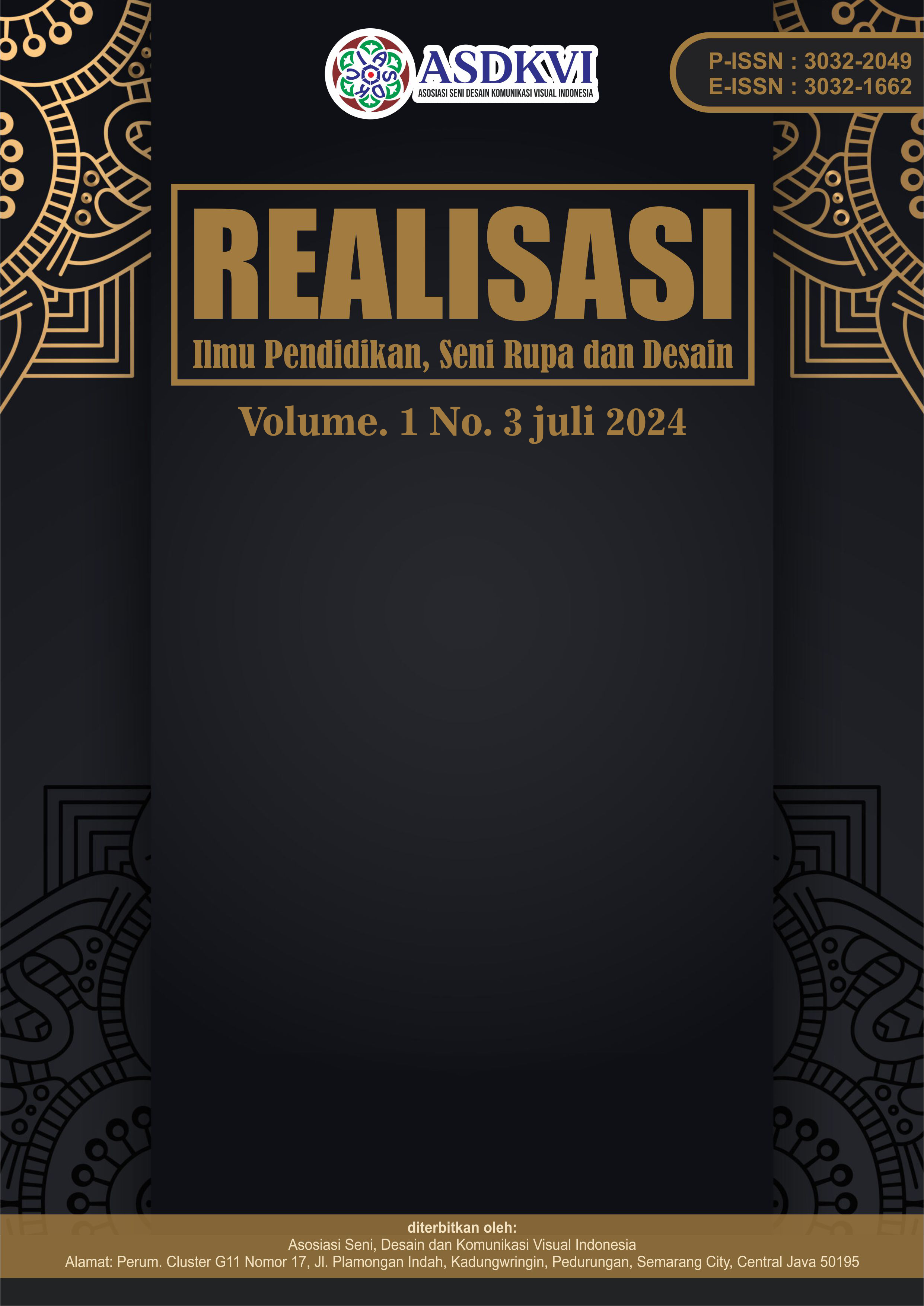Improving Students’ Vocabulary Achievement Through Short Story at the Eight Grade of SMP Negeri 4 Kendari
DOI:
https://doi.org/10.62383/realisasi.v1i3.316Keywords:
Short Story, Vocabulary Achievement, Classroom Action ResearchAbstract
This study was a classroom action research (CAR) on improving students’ vocabulary achievement through short story to Junior High School. This research was conducted within two cycles in which each cycle consisted of three meetings. Either first cycle or second cycle consisted of planning, action, observation/evaluation, and reflection. The subject of this study was 8th Grade students’ at SMP Negeri 4 Kendari. A number of the students in the class were 32 students. Then, the instruments were used in this study include observation sheet of teacher’s and students’ activity, vocabulary test. The improvement could be seen in the result of students’ achievement after conducting this study was 90.62% proved that it achieved classical achievement. Moreover, percentage of teacher’s and student’s activity also achieved 800% in the second cycle. In other words, the students’ vocabulary at Grade 8th of SMP Negeri 4 Kendari improved through short story.
References
Anderson, M., & Anderson, K. (1997). Text types in English 2. Macmillan Education Australia Pty Ltd.
Best, J. W., & Kuhn, J. V. (2006). Research in education. Pearson.
Brown, H. D. (2004). Language assessment: Principles and classroom practices. Longman.
Brumfit, C. (1982). Some humanistic doubts about humanistic language teaching. In Humanistic approaches: An empirical view (ELT Document 113). British Council.
Burns, A. (2010). Doing action research in English language teaching. Routledge.
Buzan, T. (with Buzan, B.). (1993). The mind map book: Unlock your creativity, boost your memory, change your life. Penguin Group.
Elliott, J. (1998). Action research for educational change. Open University Press.
Firdausi, A. N. (2015). Using miming games in teaching present continuous tense.
Freez, S., & Joyce, H. (1989). Text-based syllabus design. Macquarie University.
Gardner, H. (1985). Frames of mind: The theory of multiple intelligences. Basic Books, Inc.
Gardner, H. (1999). Intelligence reframed: Multiple intelligences for the 21st century. Basic Books, Inc.
Gerot, L., & Wignell, P. (1994). Making sense of functional grammar. Gerd Stabler.
Gerot, L., & Wignell, P. (1995). Making sense of functional grammar. Tanya Stabler.
Goddard, A. (2003). Vocabulary for assessment. Routledge.
Goleman, D. (1996). Emotional intelligence. Bloomsbury.
Harmer, J. (1998). How to teach English: An introduction to the practice of English language teaching. Longman.
Harmer, J. (2001). The practice of English language teaching (3rd ed.). Pearson Education Limited.
Harris, D. P. (1969). Testing English as a second language. McGraw-Hill Book Company.
Hartani, L. (2012). The effectiveness of mime game in teaching English grammar.
Heaton, J. B. (1974). Writing English language tests. Longman Group, Ltd.
Hong, L. (2002). Using games in teaching English to young learners. The Internet TESL Journal. Retrieved February 22, 2008, from http://iteslj.org/Lessons/Lin-UsingGames.html
Hopkins, D. (1985). A teacher’s guide to classroom research. Open University Press.
Lee, K. K. S., et al. (2011). Effect of language learning games on Korean elementary school students.
McNiff, J. (1997). Action research: Principles and practice. McGraw-Hill Book Company, Inc.
Meyers, A. (2005). Gateways to academic writing: Effective sentences, paragraphs, and essays. Longman.
Mills, G. E. (2000). Action research: A guide for the teacher researcher. Prentice-Hall, Inc.
Novak, J. D. (1990). Concept of mime: A useful tool for science education. Journal of Research in Science Teaching, 27.
Pinter, A. (2006). Teaching young language learners. Oxford University Press.
Ramelan. (1994). Introduction to linguistic analysis. IKIP Semarang Press.
Saris, W. E., & Gallhofer, I. N. (2014). Design, evaluation, and analysis of questionnaires for survey research. John Wiley & Sons, Inc.
Schmitt, N. (2000). Vocabulary in language teaching. Cambridge University Press.
Stuart, W. (2008). Receptive and productive vocabulary size of L2 learners. Studies in Second Language Acquisition. Multilingual Matters Ltd.
Tellier, M. (2007). How do teachers’ gestures help young children in second language acquisition? In Proceedings of the meeting of International Society of Gesture Studies (ISGS 2005: Interacting Bodies), June 15-18, ENS Lyon, France. Retrieved from http://gesture.lyon.2005.ensish.fr/MG/pdf/TellierFINAL.pdf
Tellier, M. (2008). The effect of gestures on second language memorisation by young children. Gesture, 8(2), 219-235.
Thornbury, S. (2002). How to teach vocabulary. Pearson Education Limited.
Ur, P. (1998). A course in language teaching: Practice and theory. Cambridge University Press.
Vernon, S. (2006). Teaching vocabulary with fun learning games. Retrieved May 5, 2012, from http://www.symplyesl.com/article/97/1/TeachingVocabulary-with-Fun-Learning-Games/Page-1.html
Wallace, M. J. (1998). Action research for language teachers. Cambridge University Press.
Wardhaugh, R. (1992). Sociolinguistics. Oxford University Press.
White, F. D. (1980). The writer's art: A practical rhetoric and handbook. Wadsworth Inc.
Wright, A., Betteridge, D., & Buckby, M. (2001). Games for language learning. Cambridge University Press.
Downloads
Published
How to Cite
Issue
Section
License
Copyright (c) 2024 Realisasi : Ilmu Pendidikan, Seni Rupa dan Desain

This work is licensed under a Creative Commons Attribution-ShareAlike 4.0 International License.





